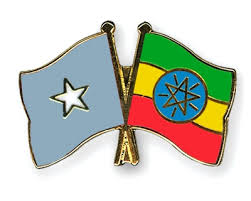THE ESCALATING ETHIOPIA-SOMALIA RIFT
By Hassan Tahir
In contemporary times, the geopolitical milieu within the Horn of Africa has become characterized by a discernible escalation in tensions between Ethiopia and Somalia. At the crux of this escalation is Ethiopia’s unwavering insistence on an illicit Memorandum of Understanding (MoU) with Somaliland, specifically concerning the acquisition of sea access and the establishment of a naval base. This maneuver is perceived as a direct affront to the sovereignty and territorial integrity of Somalia, thereby eliciting concerns of heightened military mobilization and the potential for armed conflict.

In delving into the intricacies of this unfolding situation, it becomes imperative to meticulously examine historical antecedents, the current military capabilities inherent in each nation, and the prospective advantages that may shape the outcomes of such a contentious geopolitical conundrum.
Historical Context:
The historical context unveils Somalia’s formidable legacy in resisting foreign intervention, exemplified by its struggles against colonial powers and the 1977 Ethio-Somali war. Despite Ethiopia’s possession of superior military arsenals, Somali forces achieved victory, seizing control of the vast eastern part of the country, and underscoring the inherent resilience of the Somali people.
Moreover, the incursion led by Meles Zenawi’s military, with backing from Western countries in 2006, encountered substantial resistance and suffered significant casualties and humiliation at the hands of Somali fighters. This Ethiopian military intervention in sovereign Somalia ultimately contributed to the emergence of the Al-Shabaab terrorist group.
Ethiopian Military Challenges:
An examination of Ethiopia’s recent military engagements reveals a concerning situation within the current Ethiopian military. Suffering from poor military command and inefficiency, a substantial number of experienced military personnel have defected, aligning themselves with the Tigray Defense Forces (TDF), while others have faced illegal arrests. More recently, a considerable portion of the Ethiopian National Defense Forces (ENDF) has defected to join the FANO militia in the ongoing conflict in the Amhara region. The remaining military force predominantly comprises untrained, desperate, and unemployed youth recruited from the streets of major cities.
The protracted conflict in Tigray, initially planned as a two-week operation, extended over three years, resulting in a significant loss of ENDF personnel. The TDF’s successful advance towards the capital exposed internal vulnerabilities within Ethiopia, and the current military finds itself stretched thin as it contends with various fronts, including the defense against rebel groups like the Oromo Liberation Army (OLA) and Amhara Fano. This multifrontal struggle underscores the formidable challenges Ethiopia confronts, both in terms of morale and military capacity, painting a picture of a military facing unimaginable difficulties.
Somalia’s Military advantages:
In stark contrast to Ethiopia’s military challenges, Somalia boasts significant military advantages, having made notable strides in enhancing its capabilities. The country has seen the training of a considerable number of specialized commando units, namely Gorgor and Danab, in Turkey, Eritrea, and within Somalia itself with support from the US and EU. The lifting of the military embargo has paved the way for the acquisition of modern equipment, with the EU contributing non-lethal military gear funded through the European Peace Facility (EPF) to the Somali National Army (SNA). Credible sources indicate that Somalia anticipates the receipt of modern military equipment from Egypt.
Additionally, the presence of a TB2 Turkish drone further bolsters Somalia’s aerial capabilities. Alongside well-trained naval forces, these advancements contribute to a robust defense posture. Furthermore, military cooperation between Eritrea and Egypt, both of which stand as rivals to Ethiopia, suggests potential intervention in the evolving situation, adding another layer of complexity to the regional dynamic.
Ethiopia’s Diplomatic and Economic Challenges:
Ethiopia is confronted with a confluence of diplomatic and economic challenges that compound the risks posed by its military endeavors. The nation finds itself diplomatically isolated, grappling with strained relations with neighboring countries, and navigating the complexities of a faltering economy. As Ethiopia strives to realize its Perilous ambitions, a growing number of countries are expressing solidarity with Somalia, vehemently denouncing the contentious Memorandum of Understanding (MoU) and cautioning Ethiopia to uphold Somalia’s sovereignty and territorial integrity.
The international community’s call for restraint is gaining momentum, and failure to heed these warnings might expose Ethiopia to severe back-bending sanctions, particularly given the current economic crises the nation faces. The pursuit of what some deem as delusional ambitions, including the quest for sea access, could further intensify internal divisions, potentially leading to a disintegration reminiscent of the tumultuous scenario witnessed in Yugoslavia.
Potential expected risks:
Opting for a path of military aggression poses considerable risks for Ethiopia, encompassing both internal and external challenges. Internally, the potential for escalated conflicts within Ethiopia raises the specter of disintegration, as long-standing internal tensions may intensify. The Somali nationalization sentiment could gain strength, sparking guerrilla warfare with unified Somali forces rallying against Ethiopia, possibly asserting claims over the Somali region within Ethiopia. Externally, a formidable coalition of military powers could align in support of Somalia, hastening the potential collapse of Ethiopia’s dominance in the Horn of Africa.
Despite Ethiopia’s possession of advanced military equipment, recent shortcomings indicate a susceptibility to challenges on multiple fronts, creating a fertile ground for groups like the Oromo Liberation Army (OLA) and Amhara FANO to seize control of Addis Ababa and establish their own government. The involvement of entities like the Al-Shabaab terrorist group could further escalate the conflict, turning Ethiopia into a volatile battleground and exacerbating regional destabilization.
Ethiopia’s unwavering pursuit of an unlawful Memorandum of Understanding (MoU) and the looming specter of potential military aggression against Somalia underscore a perilous path fraught with significant risks. Both historical precedents and recent military struggles lay bare Ethiopia’s vulnerabilities, signaling a precarious scenario. The potential conflict in the Horn of Africa not only threatens to destabilize the region but also poses a genuine risk of contributing to Ethiopia’s internal disintegration. In the face of these challenges, the imperative for diplomatic solutions and regional cooperation becomes clear, serving as the linchpin to prevent the descent into a destructive and far-reaching conflict.
It is through dialogue, collaboration, and a commitment to peaceful resolutions that the nations involved can navigate the current tensions and work towards fostering stability and harmony in the Horn of Africa.
Hassan Tahir
Email: Hassensaid909@gmail.com
————
Related articles:
1. Has Prime Minister Abiy Ahmed failed history at the school? failure in history may lead him to failure in leadership By Prof Abdisalam M Issa-Salwe and Abdullahi Salah Osman
2.Abiy Ahmed’s MoU with Muse Bihi threatens Horn of Africa stability by Abdirahman Baadiyow
3-Calculated ambiguity: A sovereign port, access to the sea or a naval base? By Prof Ezekiel Gebissa
4-The historical search for a sea outlet and leadership legacy By Faisal A Roble
5.Ethiopia and Somaliland deal: A declaration of war against Somalia By Hassan Zaylai
We welcome the submission of all articles for possible publication on WardheerNews.com. WardheerNews will only consider articles sent exclusively. Please email your article today . Opinions expressed in this article are those of the author and do not necessarily reflect the views of WardheerNews.
WardheerNew’s tolerance platform is engaging with diversity of opinion, political ideology and self-expression. Tolerance is a necessary ingredient for creativity and civility.Tolerance fuels tenacity and audacity.
WardheerNews waxay tixgelin gaara siinaysaa maqaaladaha sida gaarka ah loogu soo diro ee aan lagu daabicin goobo kale. Maqaalkani wuxuu ka turjumayaa aragtida Qoraaga loomana fasiran karo tan WardheerNews.

